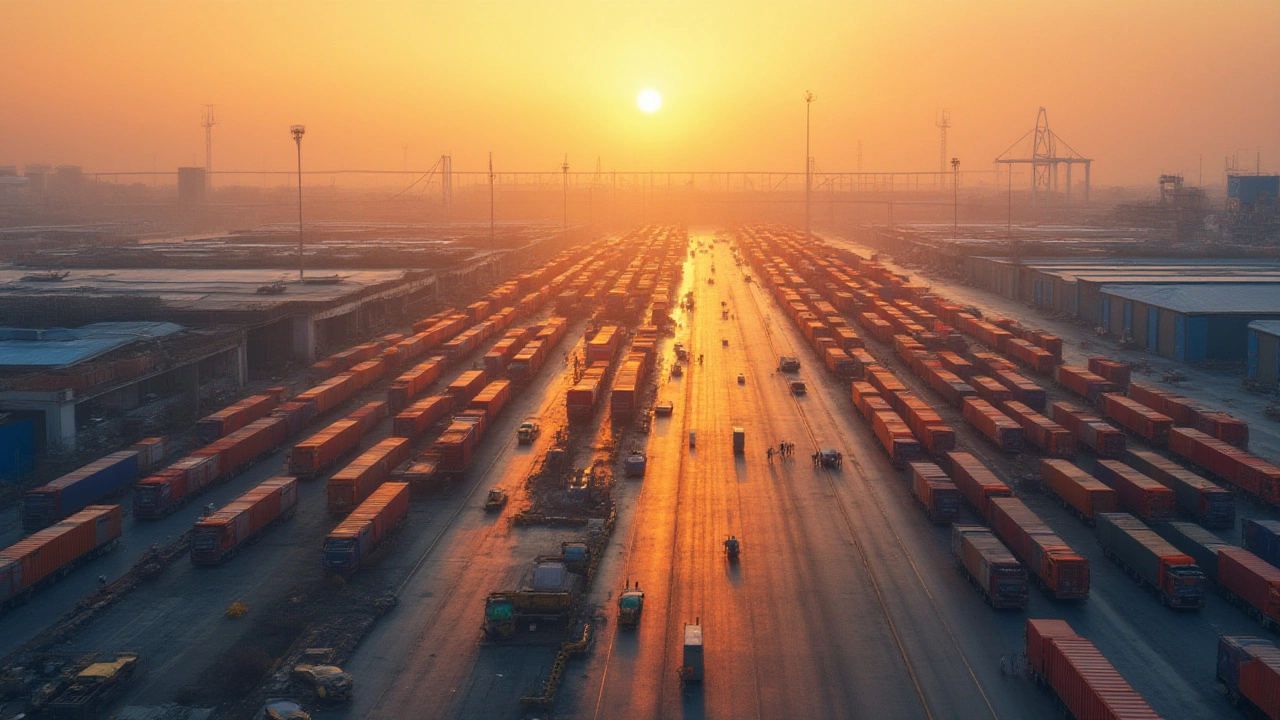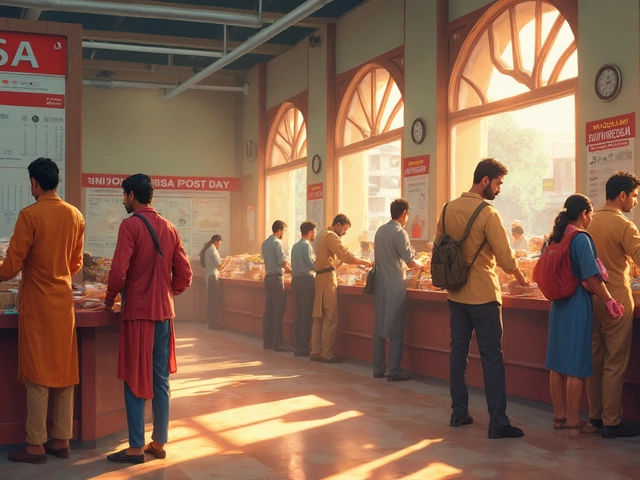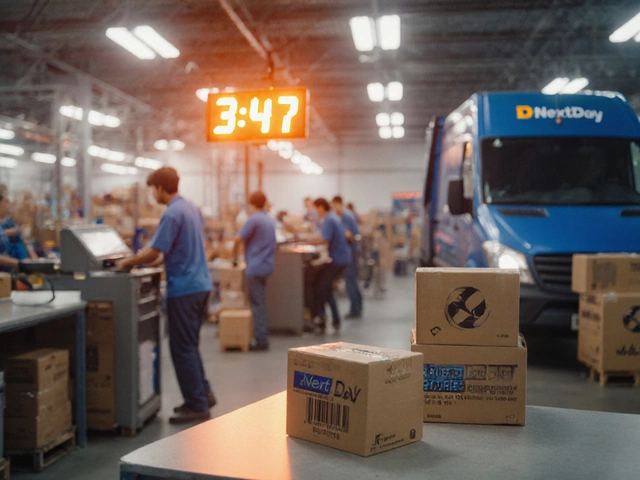If you’ve ever stood inside a giant warehouse, staring across endless racks filled with products, it’s easy to think: nothing could possibly be bigger. But the logistics world loves to prove us wrong. Massive as warehouses can get—think of Walmart’s million square foot behemoths—there are supply chain spaces out there that dwarf them into little more than organized closets. You want to know bigger? It’s out there. And it’s changing everything from the price of your online sneakers to how fast you get your morning coffee at home.
From Warehouses to Mega Sites: Scaling Up Storage
Warehouses started as nothing more than big, blank spaces to store goods and keep inventory dry. Fast forward to 2025, and the definition of "bigger than a warehouse" covers a whole ecosystem. The modern supply chain relies on spaces like distribution centers, fulfillment hubs, cross-docks, industrial parks, and global logistics complexes. The largest distribution centers now regularly pop up at over 2 million square feet. Amazon has a handful in the U.S. alone that swallow up 26 football fields for every one of their employees to manage. For context, a single football field is about 57,600 square feet. So these centers are literally towns built for packages.
Take a look at Alibaba's Cainiao logistics center in China. Sitting on over 2.6 million square feet, it uses automated robots, high-speed conveyors, and even drones. They built it not just to store but to move goods at insane speeds across Asia and beyond. The goal isn't to just hold items but to make items move so fast you barely notice they stopped for a minute. Meanwhile, Tesla’s Gigafactories in places like Nevada and Berlin show that manufacturing can marry itself to distribution. Gigafactory Nevada alone claims more than 5.3 million square feet. That's larger than the Pentagon.
These mega spaces didn’t appear by accident. Retailers noticed they needed to get closer to their customers and promise faster shipping—thanks, Amazon Prime. That pushed the industry to not just get bigger, but spread out. Now, you’ve got a network of facilities: some huge, some small, all working together so that an order for a single toothbrush can appear on your doorstep in hours.
The Giant Leap: What Counts as Bigger Than a Warehouse?
The term "warehouse" just doesn’t cut it any more. Step up to distribution centers and you’re into a different league. Typical warehouses hold stuff. Distribution centers get stuff in, sort it out, re-package, and send it off. But there’s bigger yet: fulfillment centers. Amazon made this a household term, but it's bigger than just a single company. Fulfillment centers combine robotics, people, packing, shipping, and returns all under one—often enormous—roof. Some Amazon fulfillment centers are now over 1,000,000 square feet. Target and Walmart are racing to match or beat this, not just in the U.S. but Europe and Asia, too.
Beyond fulfillment centers, logistics parks and supply chain complexes take things up several notches. These are developments spanning over hundreds or even thousands of acres, mixing multiple distribution and fulfillment centers along with transport hubs, truck yards, maintenance facilities, even full-service hotels for truckers. The Dubai Logistics City covers 140 square kilometers—compare that to Central Park's tiny 3.4 square kilometers! DHL, UPS, and the world’s biggest importers and exporters build these super-complexes right next to seaports or major airports to minimize hours—or even minutes—in moving from plane or ship into vans or small trucks.
If that seems hard to picture, remember this: Imagine every football stadium in the English Premier League rolled into a single park with nothing but roads, warehouses, robots, and non-stop activity. That’s what the world’s biggest logistics parks look like right now.
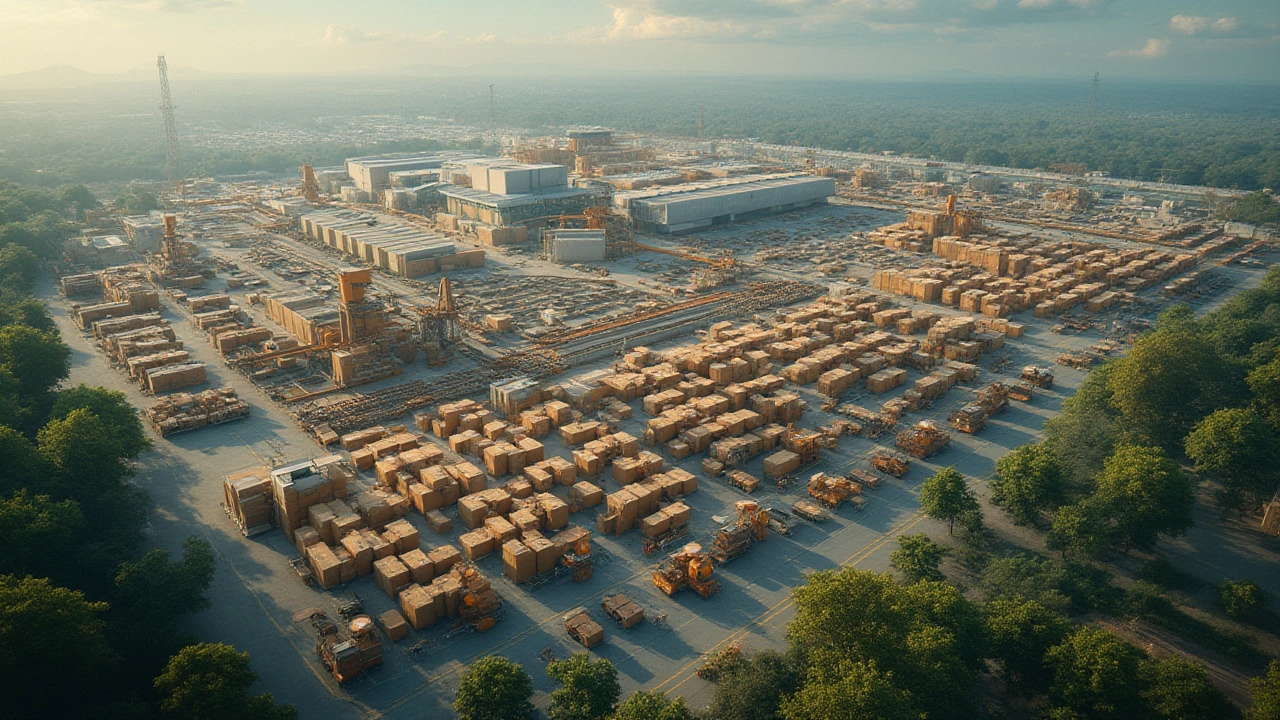
The Global Scene: Massive Logistics Hubs Around the World
The United States and China lead the mega-space race, but Europe, India, and the Middle East are closing in fast. The world’s five largest distribution centers are each bigger than the Vatican City. Check out the numbers below for just a taste of how these monsters compare.
| Facility Name | Country | Approximate Size (sq ft) | Primary Function |
|---|---|---|---|
| Tesla Gigafactory Nevada | USA | 5,300,000 | Battery & Vehicle Production/Distribution |
| Amazon Fulfillment Center MQY1 | USA | 3,600,000 | Order Fulfillment |
| Cargill Warehouse Port of Santos | Brazil | 2,720,000 | Grain Storage & Export |
| Cainiao Smart Logistics Park | China | 2,600,000 | Robotic Fulfillment |
| Dubai Logistics City | UAE | 1,506,000+ | All-in-One Logistics/Distribution |
In India, the Adani Logistics Park built next to Mumbai port runs at a similar scale. DHL's Leipzig superhub processes well over 2.5 million shipments per day. Europe’s largest, Prologis Park in Tilburg, the Netherlands, hosts dozens of companies and stretches beyond what you can see from the end of the runway.
Volume is just as important as floor space. Some of these places move goods on a scale that would’ve made last century’s rail barons dizzy: hundreds of thousands of parcels per hour, with fleets of autonomous vehicles running non-stop like armies of efficient bees. And most of this happens out of sight. Next time you get an online order overnight, somewhere, one of these facilities turned on the afterburners just for you.
Why Mega-Sized Logistics Spaces Matter
Here’s the deal: having a warehouse isn’t what powers today’s economy. It’s the ability to manage millions of products, in millions of places, all at breakneck speed. Distribution centers and logistics parks aren’t just about being big—they’re about being smart. They cut delivery times, hold huge inventories, and even help companies react when stuff goes way off-script—like during the COVID-19 pandemic, when toilet paper suddenly became more valuable than gold in some places.
Having these vast, networked logistics campuses also lets companies pivot instantly. When an iPhone drops, Apple works through a global dance of mega-facilities that move product from the factory to your hands, sometimes within a single day. Grocery chains now rely on cold storage ‘warehouses’ bigger than shopping malls to restock everything from ice cream to tomatoes using automated forklifts and subscription data that predicts what you’ll buy next week.
It’s not just tech and retail. Agriculture relies on those record-breaking Cargill grain centers in South America and Ukraine. Pharmaceuticals need frozen, secure hubs across continents. Even carmakers ship engines and body parts between assembly “supersites” that function more like airports than old-fashioned warehouses. The stakes? Billions wasted—or saved—based on how efficiently the mega-spaces play together.
If you’re running a small business or launching an eCommerce side-hustle, partnering with the right mega hub gives you leverage you’d never have alone. You instantly plug into a grid that can shrink shipping times and costs, letting you compete head-on with the big dogs. And if you’re in logistics IT or robotics, these places are like Disneyland: a test-bed for every new automation you can dream up.
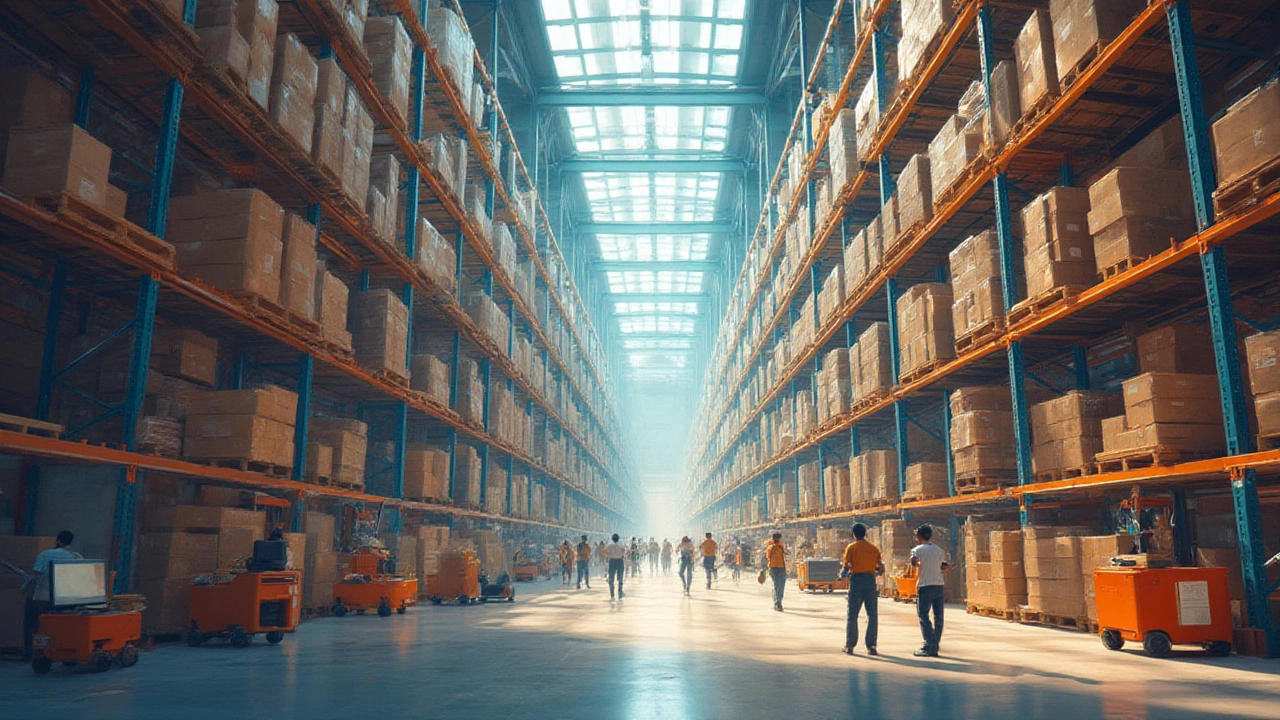
Tips, Trends, and the Future of “Bigger than Warehouse”
If you’re mapping out your next move in logistics, here’s what stands out:
- Automation is king. If the facility isn’t upgrading with conveyor robots and AI-controlled picking, it’s already falling behind. Amazon reportedly has more than 750,000 robots working alongside people in its fulfillment centers as of 2024.
- Location is everything. Distribution complexes built within 1-2 hours of major metro areas unlock “same-day” and “next-day” promises that attract customers and keep rivals scrambling.
- Sustainability isn’t optional. Solar panels on rooftops, fleets of electric vehicles, and eco-friendly packaging are now baked into the biggest projects. Companies like Prologis and DHL set targets to run entire mega parks on renewable energy by 2030.
- International integration is exploding. The borderless movement of goods from Asia to Europe, America to Africa, depends on seamless mega-space links—hence the explosion of "inland ports" and multimodal super-hubs connecting trucks, trains, and planes.
- Security and data are the backbone. The physical size of these giants is matched by their digital might. Developers are embedding entire IT teams, biometric scanners, and anti-cyberattack systems right in the design stage.
Curious about cost? To run with the giants, companies need deep pockets. Mega-logistics parks regularly require investments topping $500 million per project, with tenants spending tens of millions just to lease and kit out their slice of the pie.
The next leap? Floating logistics hubs at sea, drone-only transfer points, and even underground "city-sized" fulfillment labs are being tested. One company out of Switzerland is tunneling freight alongside passenger metros under dense cities. It’s non-stop innovation because every minute counts in a hyper-connected world. The faster, smarter, bigger you get, the more you shape how the rest of the world eats, shops, and lives.
